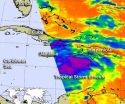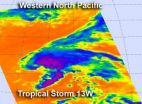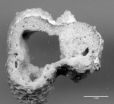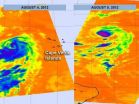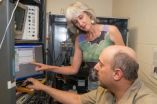(Press-News.org) URBANA – The trade in ivory was largely outlawed in 1989, but poaching continues and remains a serious threat to the African elephant. Seizures of large amounts of ivory, sometimes over a ton, continue to occur. Research by Alfred Roca, an assistant professor at the university, could be the basis for the development of new law enforcement tools.
Roca has found a way to determine where the ivory comes from. With funding from the Division of International Conservation of the U.S. Fish and Wildlife Service, he and his collaborators have sampled elephants at 22 locations in 13 African countries to get sequences of their mitochondrial DNA (mtDNA).
mtDNA is the DNA located in mitochondria, structures within cells that convert the chemical energy from food into a form the cells can use. Most DNA is "nuclear," found in the cell nucleus. What makes mtDNA a good marker for tracing the origin of ivory is first, that it is transmitted only by females and second, the fact that female elephants do not migrate between herds.
Other researchers have found that it is possible to get fragments of mtDNA from ivory and that is possible to amplify those fragments. Roca and his collaborators wanted to match these fragments to elephants from a specific location.
To do this, Nicholas Georgiadis, a researcher who was in Kenya and is now at Washington State, used a rifle to shoot a biopsy dart, which would hit the side of the elephant and scrape a small piece (less than a centimeter square) of skin from the elephant and fall off.
"It's like a biting insect," said Roca. "The hardest part was finding the dart after it fell off. Georgiadis never had a problem with an elephant unless it was already predisposed to be hostile to humans."
Georgiadis collected 653 samples that Yasuko Ishida, a researcher in Roca's lab, then sequenced and analyzed. She found eight distinct subclades, or subdivisions, of mtDNA – previous research had detected only two to five -- seven of which had limited geographical distribution.
They identified 108 unique mtDNA sequences, which provided fine-scale information about the origin of the ivory. Among the sequences, 72 percent were found in only one locality and 84 percent of them were country-specific. Although many elephants can have the same sequence, 44 percent of the individual elephants carried a sequence detected only at their sampling locality.
Roca and his team combined these results with five earlier trans-national surveys, which allowed them to examine a shorter region of elephant mtDNA in 81 locations in 22 African countries. Among the 101 unique short sequences detected, 62 percent were present in only one country.
More importantly, the phylogeographic signal (the geographic information provided by mtDNA) was different from the signal provided by nuclear DNA markers used in previous studies. Nuclear markers distinguished between forest and savanna elephants; the mtDNA marker indicated a precise location. The best method would be to combine both types of markers.
Roca hopes that the method developed in this research will be used by conservationists to determine the provenance of confiscated ivory. "It is often hard to trace ivory back to where it came from," he said. "A ship may have left from a certain port in Africa, but that's not necessarily the country where the elephants were poached."
Sequencing the mtDNA can give a good indication of where the ivory is being poached. "Then steps can be taken by that particular country to prevent the poaching from taking place," said Roca.
The research has just been published in Evolutionary Applications.
###
The research is described in more detail in the following article:
Ishida, Y., N. J. Georgiadis, T. Hondo, and A. L. Roca. "Triangulating the provenance of African elephants using mitochondrial DNA." Evolutionary Applications. Published online http://onlinelibrary.wiley.com/doi/10.1111/j.1752-4571.2012.00286.x/full
END
ZURICH — Though sophisticated three-dimensional imagery is abundant in computer-generated games and movies, a group of researchers from Disney Research, Zürich, University of California, San Diego, Limbic Software, and RWTH Aachen University say they have gained insights to improve the rendering of those images by envisioning a flat, two-dimensional world.
The fundamental physics of light is easier to understand in that 2D world than in a 3D environment, they said, and enabled them to develop simplified equations for governing the behavior of light. This in turn allowed ...
VIDEO:
An animation of satellite observations shows the progression of Tropical Storm Ernesto from Aug. 4-6, 2012. The animation begins when Ernesto was south of Jamaica and ends when the storm...
Click here for more information.
Tropical Storm Ernesto continues to track through the Caribbean and satellite data and NOAA hurricane hunter aircraft revealed a strengthening storm mid-day on Monday, August 6. NASA infrared data revealed strong thunderstorms on August 5 that ...
When NASA's Aqua satellite captured an infrared view of the northwestern Pacific's latest tropical storm, Tropical Storm 13W, the data revealed the bulk of the heavy rainfall on the northern side of the center.
NASA's Aqua satellite passed over Tropical Storm 13W on August 6 at 0205 UTC (Aug. 5 10:05 a.m. EDT). The Atmospheric Infrared Sounder (AIRS) instrument captured an infrared image of the cloud temperatures that showed the strongest storms (purple) and heaviest rainfall north and east of the center of circulation.
Infrared imagery shows temperature and the higher ...
Microbes, sponges, and worms—the side effects of pollution and heavy fishing—are adding insult to injury in Kenya's imperiled reef systems, according to a recent study by the Wildlife Conservation Society and the University of Azores.
The authors of the study have found that pollution and overfishing on reef systems have an ecological cascading effect—the proliferation of microbes, sponges, and worms—that further degrade corals, a discovery that underlines the complexity of reefs and possible solutions.
The study appears in the online edition of Marine Ecology Progress ...
The sixth tropical storm of the Atlantic Ocean hurricane season formed over the past weekend, and NASA kept an on its progression. Tropical Storm Florence was born in the eastern Atlantic and weakened when it interacted with dry air.
On Friday, August 3, the low pressure area known as "System 90L" was being watched for development. It was located south of the Cape Verde Islands off the African coast. By the early evening (Eastern Daylight Time) it quickly organized. System 90L strengthened and became Tropical Storm Florence in the eastern Atlantic. Over August 4 and 5 ...
ZURICH — Scientists have yet to fully unravel the mysteries of rainbows, but a group of researchers from Disney Research, Zürich, UC San Diego, Universidad de Zaragoza, and Horley, UK, have used simulations of these natural wonders to unlock the secret to a rare optical phenomenon known as the twinned rainbow.
Unlike the more common double-rainbow, which consists of two separate and concentric rainbow arcs, the elusive twinned rainbow appears as two rainbows arcs that split from a single base rainbow. Sometimes it is even observed in combination with a double rainbow. ...
"Pants on fire" isn't the only problem liars face. New research from the University of Notre Dame shows that when people managed to reduce their lies in given weeks across a 10-week study, they reported significantly improved physical and mental health in those same weeks.
Funded by a grant from the John Templeton Foundation, the "Science of Honesty" study was presented recently at the American Psychological Association's 120th annual convention.
"We found that the participants could purposefully and dramatically reduce their everyday lies, and that in turn was associated ...
Two NASA satellites have captured data on the activity of Typhoon Haikui as it nears the China coast. NASA's Terra satellite provided a visible look at the storm, while NASA's Aqua satellite investigated it in infrared light. Both showed some strong thunderstorms within that were likely packing heavy rainfall.
NASA's Aqua satellite passed over Typhoon Haikui on August 5. The AIRS instrument captured an infrared image of the cloud temperatures that showed the strongest storms and heaviest rainfall in all quadrants of the storm except the northern area. The strongest storms ...
ZURICH – Computer graphic artists often struggle to render smoke and dust in a way that makes a scene look realistic, but researchers at Disney Research, Zürich, Karlsruhe Technical Institute in Germany, and the University of Montreal in Canada have developed a new and efficient way to simulate how light is absorbed and scattered in such scenes.
"Our technique could be used to simulate anything from vast cloudscapes, to everyday 'solid' objects such as a glass of orange juice, a piece of fruit or virtually any organic substance," said Dr. Wojciech Jarosz of Disney Research ...
Leslie Henderson is concerned about steroid abuse, not necessarily by sports luminaries like Barry Bonds and Mark McGwire, but rather by adolescents.
"There is this disconnect among young people that somehow your emotions, your thought processes—things that have to do with your brain—are separate and different from what steroids may be doing to your body—your muscles, your heart, or your liver, or anything like that," says Henderson, a professor of physiology and neurobiology, and of biochemistry at the Geisel School of Medicine at Dartmouth. She is also the senior associate ...
